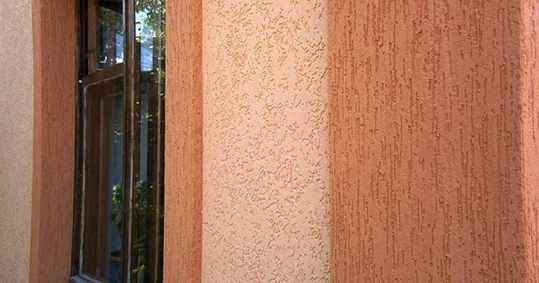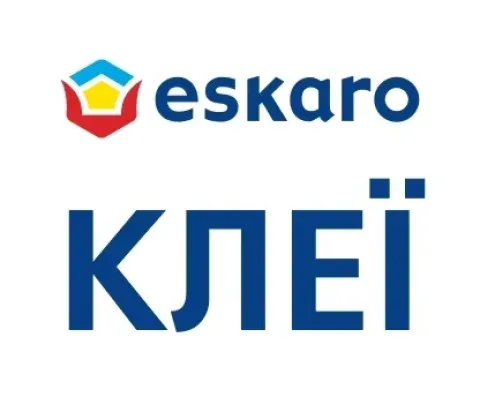
Winter preservation of mineral facade
What is winter facade preservation
Winter facade preservation is a necessary measure to protect the facade surface of a house if the entire cycle of facade finishing works has not been completed before the onset of the winter period. Usually, the reasons for incomplete construction are a lack of funds and (or) time.
There are many types of facades: mineral, wooden, facades made of glass and metal, facades made of composite materials, etc.
Today, the most common facades are facades with "mineral" type surfaces: concrete, cement-lime and cement-sand plaster, brick, "wet" thermal insulation systems. The conservation of these types of mineral facades will be discussed below.
Why is winter preservation of a mineral facade necessary?
If an “unfinished” mineral facade is not “preserved”, that is, not protected for the winter, then the complex influence of natural factors on it: moisture (rain, snow), temperature (frost, thaw), wind (“wind erosion”) can very quickly cause major damage to the facade of the building, in particular, “tear” the plaster and reinforcing mesh, or even destroy it.

One of the most destructive processes is the accumulation of excess moisture (water) in the thickness of the facade, which, freezing, increases in volume and leads to its mechanical destruction.
It must be remembered that the restoration of damage received by the facade during the winter season will cost much more than preventive measures for its conservation for the winter period.
What material can be used for winter conservation of a mineral facade
Winter conservation of a mineral facade of a house can be performed with an adhesive quartz primer containing white pigment. Such primers, for example, are AURA Dekor Silikon Grund, AURA Dekor Grund, AURA Dekor Putz Grund, KAPRAL ST16, Condor Dekogrund 16. Primers of this type are sometimes also called primer-paints, because as primers they are an intermediate coating, and as paints - they are applied to the surface with a roller or brush and have the ability to "cover" the surface due to the content of white pigment. In addition, such primers, like conventional paints, can be tinted in different colors, and in some cases, it is even recommended to do so.
How exactly do primers preserve a mineral facade for the winter period
Adhesion quartz primer consists of: acrylate dispersion, quartz (or marble) filler, white pigment - titanium dioxide, auxiliary additives, water.
After application and drying, the primer: - protects the surface from external mechanical damage (wind erosion) thanks to the quartz (or marble) filler, which creates a mechanically strong layer on the surface.
- - protects the surface from moisture penetration from the external environment (rain, snow) thanks to the moisture-repellent film formed by the part of the dispersion remaining on the surface.
- - strengthens the top layer of the surface - thanks to the other part of the dispersion that penetrates inside.
It is the moisture-repellent film on the surface that prevents the penetration from the outside and the accumulation in the thickness of the facade of excess moisture (water), which, freezing, increases in volume and leads to mechanical destruction of the facade. However, this film allows steam to pass through and allows the facade to "breathe", releasing excess moisture from the inside of the building.

The main purpose of adhesive quartz primers in facade work
When performing facade work, primers of this type are used as an adhesion layer for subsequent application.:
- - ready-made water-dispersion decorative plasters of the "bark beetle" type, "lamb" type, and other structural acrylic and silicone-modified plasters;
- - mineral decorative plasters of the "bark beetle" type, "lamb" type, and other structural plasters based on cement;
- - ready-made water-dispersion acrylic and silicone-modified facade structural paints, textured paints, relief paints;
- - ready-made smooth facade water-dispersion acrylic putties;
- - mineral smooth plasters and putties based on cement.
Therefore, materials for which it is recommended to apply a primer can be conditionally divided into materials with a structured surface and materials with a smooth surface.
What type of mineral facade surface is recommended to be preserved for the winter using primers
The list of surfaces for winter preservation using adhesive quartz primers containing white pigment is limited only to mineral-type surfaces.
These include: concrete, cement-lime and cement-sand plaster, brick, as well as the "second" protective and reinforcing adhesive layer in the "wet" thermal insulation system, applied over the insulation.
It should be recalled that for finishing in "wet" thermal insulation systems, it is recommended to use plasters such as "bark beetle", "lamb" and other structural plasters, as well as structural paint, textured paint, relief paint.
Degrees of readiness for surface treatment before winter preservation using adhesive quartz primers
1. It was planned to apply a structural or smooth material without a “wet” thermal insulation system or it was planned to apply a “wet” thermal insulation system, but the surface has not yet been insulated. In this case, it is recommended to apply one layer of adhesive quartz primer containing white pigment to the surface (concrete, cement-lime and cement-sand plaster, brick).
2. It was planned to apply a structural material to a “wet” thermal insulation system. In this case, the surface is already insulated, i.e. a “second” adhesive layer has already been applied over the insulation.
In this case, it is recommended to apply one layer of adhesive quartz primer containing white pigment to the surface (on the “second” adhesive layer).
Attention! Adhesive quartz primer containing white pigment is not intended for application for winter preservation of facades: on foam concrete (aerated concrete), shell rock, as well as on foam plastic (expanded polystyrene) insulation.
Surface preparation and application of adhesive quartz primer
The surface must be dry, clean and have sufficient load-bearing capacity. Dirt, peeling, weak, flaking areas and substances that reduce the adhesion of the primer to the base (salts, dust, fats, oils, etc.) must be carefully removed. Cracks and potholes must be filled and sealed with a suitable repair mortar or putty. Weak, porous surfaces or surfaces that produce dust must be treated with a penetrating strengthening general construction primer. Fresh lime-cement surfaces must be aged for at least one month before priming. Areas affected by mold or moss must be thoroughly cleaned mechanically and treated with an anti-mold agent.
Adhesive quartz primer can be applied at ambient, base, and primer temperatures from +10°C to +30°C with a brush or squeegee, a fur roller, a foam structural roller, or a sprayer.
Coverage per layer: up to 5 m2/l. Coverage depends on the application method and surface type.
Drying: tack-free in 2 hours, depending on the layer thickness, at an air temperature of +20°C and a relative humidity of 65%.
A day after applying the primer, the surface acquires its protective properties.

Another advantage of applying an adhesive quartz primer before the winter season is that when facade work resumes, there is no need to apply it again. To continue the work, it will only be necessary to dust the surface, that is, treat it with one layer of a permeable general-purpose acrylic primer.
05/21/2017
Varkuta A. G.







